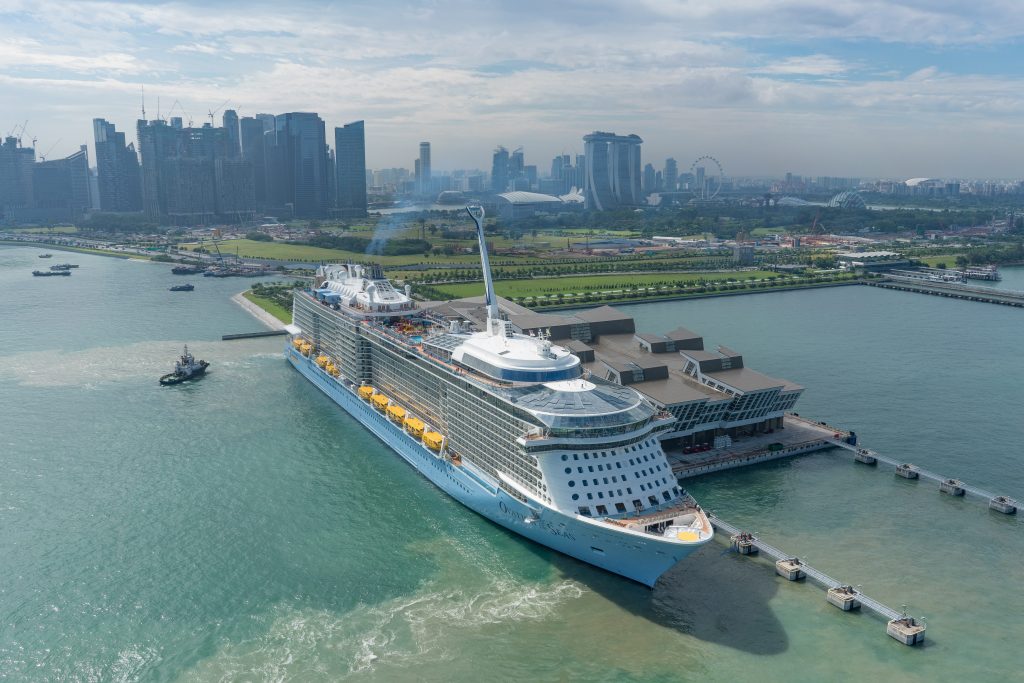Skift Take
As cruise executives often say, having ships all over the world means some areas boom while others struggle. At the moment, China-Korea tensions are hurting Royal Caribbean's business in Asia, but other regions are strong.
Royal Caribbean’s China strategy ran into some rough waters as the operator dropped South Korean ports amid tensions between the two nations — but the cruise company is seeing business in other parts the world perk up.
In a first-quarter earnings call Friday, executives with Royal Caribbean Cruises said demand for China sailings declined when the operator made itinerary changes swapping in Japanese ports for stops in Korea.
The changes, which prompted “a bit of turmoil and uncertainty,” came in mid-March as the relationship between the countries grew strained over the deployment of a U.S. anti-missile system in South Korea. Demand has been returning to normal levels, executives said.
“There was a slowdown and there was a little bit of confusion in the market because everything had to be adjusted and itineraries had to be changed,” said Michael Bayley, president and CEO of Royal Caribbean International. “The fortunate thing is that Japan is very popular with Chinese consumers; we actually started to see some demand coming in because of changes that had been made.”
Sailings in China are more fully booked than they were last year at this time, but Chief Financial Officer Jason Liberty would not say how prices were holding up compared to 2016. He also didn’t venture a guess about how long the cruise company would stay away from Korean ports with ships that sail from China.
“Talking about how long do we think the disruption is going to last, that requires a crystal ball that we don’t own,” Liberty said. Bayley said some observers are hopeful that the situation will be resolved following the presidential election in South Korea in May.
Royal Caribbean’s decade-long stretch in the China market has included several hiccups, including disruptions due to a dispute with Japan, natural disasters, and illness outbreaks.
“I think we just have to adapt and I believe that we’re kind of getting used to these curveballs when they come at us,” Bayley said.
Richard Fain, chairman and CEO of the parent company, said he still believes in the long-term potential of China.
“It’s such a large and growing market, and when you see the thing I like to quote — which is that there will be more middle-class Chinese than the population of either the United States or of all of Europe — you simply say, ‘Yes, we wil have bumps in the road and sometimes those bumps will be big bumps,'” he said. “But it’s still part of an onward, upward trajectory, so that’s the way I think we’re looking at this.”
The company announced earlier this week that it is sending another giant new ship to the Asia-Pacific region — it will sail in Australia, Singapore, and China — in 2019.
“Obviously making the decision to put…a brand new ship in the market talks about our confidence in China,” Liberty said.
Morningstar analyst Jaime Katz wrote in a note to investors that the company can always pivot if declines in demand warrant a change.
“At this time, we believe the company has positioned its deployments to maximize its revenue opportunities given the current economic environment,” she wrote. “But we would expect it to act nimbly, reallocating hardware if waning demand began to surface in any of its key deployment markets ahead, as we don’t expect economic expansion to be perpetual.”
Other Markets
The Caribbean and Europe more than offset any slump in China for the quarter, executives said.
Liberty said bookings for both regions were ahead of the same time last year in both occupancy and pricing. North American demand for European cruises has been particularly robust, he said — a contrast to early 2016, when Americans were more hesitant about crossing the Atlantic following terror attacks. The company likes to get more Americans on Mediterranean sailings because they book earlier and spend more than European passengers.
Overall, Royal Caribbean had a standout first quarter. Profits rose from $99 million last year to $214.7 million this year as revenues increased from $1.9 billion to $2 billion and costs fell more than 4 percent.
Yields, or the revenue generated per berth per day, were up 6 percent. The company increased its forecast for the rest of the year.
Shares rose 6 percent to $106.60.
The results prompted Fain to invoke the image “of a duck gliding calmly through the water” and the unseen efforts that power that action.
“As we look at the scene from the shore, all we see is an elegant duck gliding serenely across the pond,” he said. “But under the surface, there is a lot of fierce activity with a lot of energetic paddling.”
The Daily Newsletter
Our daily coverage of the global travel industry. Written by editors and analysts from across Skift’s brands.
Have a confidential tip for Skift? Get in touch
Tags: china outbound, cruise lines, earnings, royal caribbean cruises
Photo credit: Royal Caribbean Cruises said business in Asia has been struggling due to tensions between China and Korea. In this photo, Ovation of the Seas — one of the Royal Caribbean International ships that sails from China — is shown in Singapore. Royal Caribbean International
